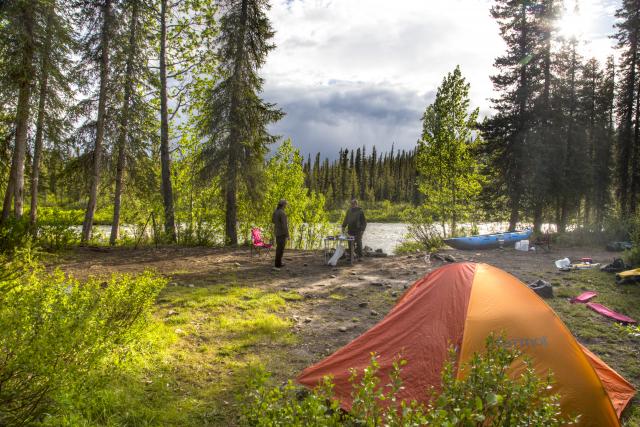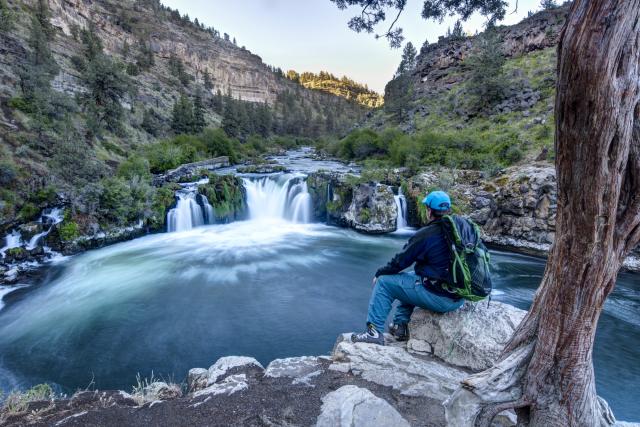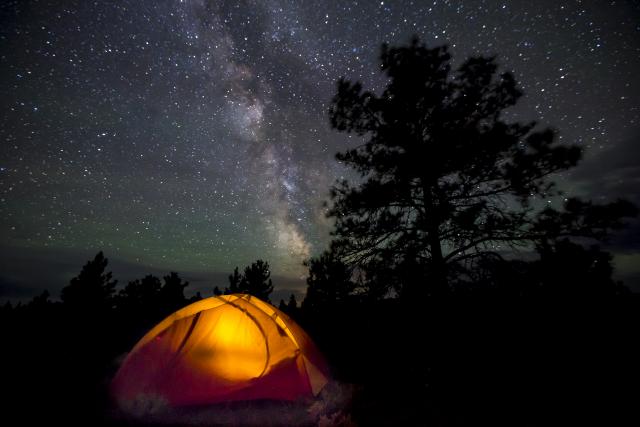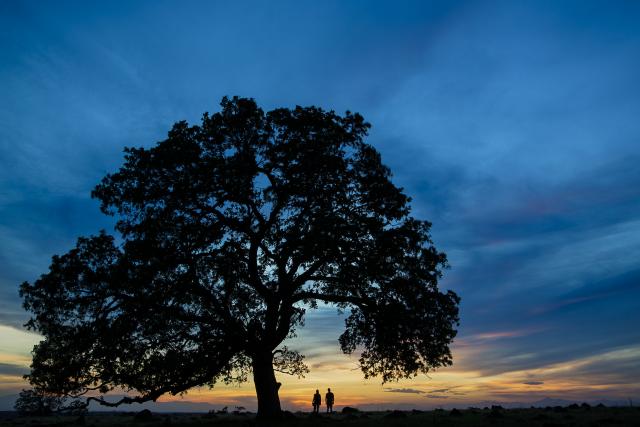You are viewing ARCHIVED content published online before January 20, 2025. Please note that this content is NOT UPDATED, and links may not work. Additionally, any previously issued diversity, equity, inclusion or gender-related guidance on this webpage should be considered rescinded. For current information, visit https://www.blm.gov/blog.
Selecting the Best Tent Site

In any camping situation, determining the best location to pitch your tent is critical. This is the foundation of your enjoyment on public lands and shouldn’t be overlooked.
So it’s day one million of Covid lockdowns, you haven’t seen your friends in ages, sipped a glass of wine with good company and frankly … you’re going a bit stir crazy! It’s time to get out and check off all those outdoor boxes you’ve been meaning to for decades but never got around to.
There’s just one problem – you don’t actually know how to do this, and if you’re being honest with yourself, your bushcraft skills are a little lacking. Or maybe you did at one time, back when heavy hiking boots and tube socks with colored rings were the rage, but your skills now are a little rusty. Never fear, your friends at the Bureau of Land Management are here to help you out with the basic skills to get you on your way to enjoying #yourpubliclands. We’re going to break things down for you Barney style to ensure you have the essential skills you need to get away from the crowds and get that much-needed nature respite.

Okay – so you’ve checked the “Know Before You Go” page on the (#knowbeforeyougo) BLM website, packed accordingly, and picked a location. It’s a little bit off the beaten path so you’ve made sure that someone else has a general idea of where you plan to be, when you expect to be back and when to call the president (We’re kidding--please don’t call the president. Call your local sheriff department first). You’ve hiked to a spot next to a running creek and the view in front of you is absolutely breathtaking.
“This is it,” you decide and go about setting up your humble abode for the next few days. In your home away from home, you’ve come up against the very first basic skill all campers should know – how to select the perfect location to set up your tent. When selecting the best site, there are a couple of key considerations: Is the ground flat? What is your exposure to sun and wind? How close are you to the water? and where do you intend to set up your fire? We’ll cover all of these in more detail.

1. Is the ground flat?
Have you ever found yourself sleeping the wrong way on a slope and woken up the next morning with a splitting headache because all the blood in your body was pooled in your head? Yep – that’s what we’re trying to avoid here. Look for an area that is generally flat with no obvious bumps. Grab your sleeping mat out of the car, lay it out, and lay on it for a few minutes to see if any rocks, pine needles or anything else is poking you. Use your foot or a broom to clear away the area you plan to pitch your tent on and then lie down on the ground and scan – looks good to go? Except for in the direst of situations, avoid putting tents on a hillside. Cool, on to the next consideration.
2. Exposure to the elements
After a long day hiking in the woods, there’s nothing better than getting back to your campsite, opening up the tent and stretching out for a few minutes to rest some of those worked muscles. However, if your tent is located directly in the line of the sun, you’re more likely to have a sauna to come home to versus the cool oasis you were dreaming of. When picking the location of your tent, look for natural outcroppings of rocks or high trees that provide shade. In addition to the shade, these natural elements will also provide a level of protection from wind.
3. Proximity to water and camp fire
Who doesn’t want to wake up, unzip the tent and lay back looking at a moving creek? We all do until a flash flood kicks up and suddenly being right on the water has become a danger. When picking your tent’s location, try to keep about 200 feet away from the water’s edge. Not only will this provide you a level of safety in the event of a flash flood, but you’re less likely to accidently contaminate water sources. The same principles apply to your tent’s proximity to your fire ring. You want to be close enough to enjoy it, but far enough away so that your tent is not getting smoked out or is a fire risk from flying embers.
And now you’re ready to pitch your tent. We’ll go over the basics of actually pitching your tent in our next “Get Primitive” article. As with any camping adventure, please remember to recreate responsibly and practice the seven Leave No Trace Principles. We all have a part to play in ensuring nature’s beauty stays that way for the visitors who come after us and for all the critters that call this place home.

Related Stories
- BLM’s Agua Fria National Monument is a worthwhile destination on your winter bucket list
- Celebrating Winter Solstice 2025 at the Meadowood SRMA
- Progress on Public Lands: BLM 2025 Trump Administration Accomplishments | January 20 - December 31, 2025
- Popular posts: BLM's most viewed blogs of 2025
- Take a First Day Hike on Your Public Lands
